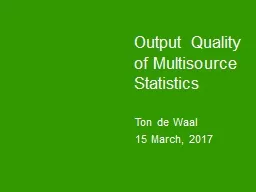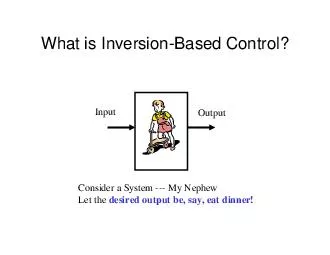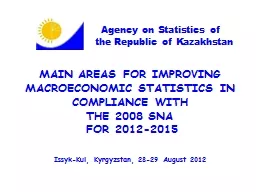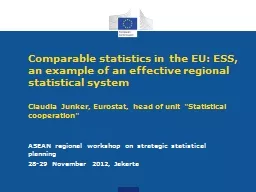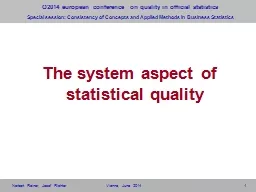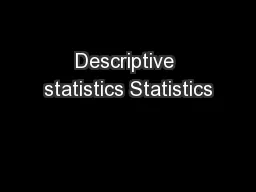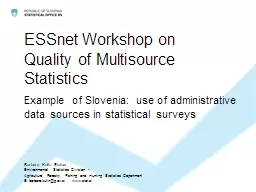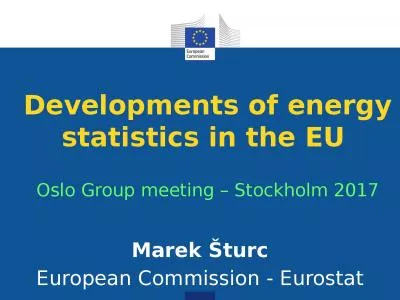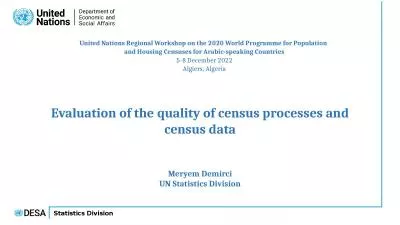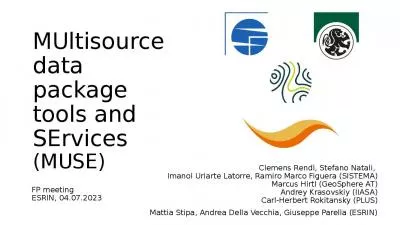PPT-Output Quality of Multisource Statistics
Author : tatyana-admore | Published Date : 2017-10-26
Ton de Waal 15 March 2017 Overview Komuso ESSnet on quality of multisource statistics Basic data configurations BDCs and some work done For all BDCs literature
Presentation Embed Code
Download Presentation
Download Presentation The PPT/PDF document "Output Quality of Multisource Statistics" is the property of its rightful owner. Permission is granted to download and print the materials on this website for personal, non-commercial use only, and to display it on your personal computer provided you do not modify the materials and that you retain all copyright notices contained in the materials. By downloading content from our website, you accept the terms of this agreement.
Output Quality of Multisource Statistics: Transcript
Download Rules Of Document
"Output Quality of Multisource Statistics"The content belongs to its owner. You may download and print it for personal use, without modification, and keep all copyright notices. By downloading, you agree to these terms.
Related Documents

